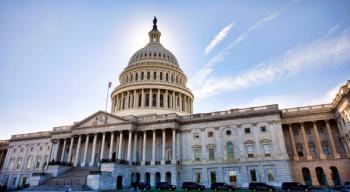
- Managed Healthcare Executive December 2018 Issue
- Volume 28
- Issue 12
What Every Healthcare Executive Must Remember as 2019 Approaches
While we all want to predict the future so we can avoid obstacles, we cannot allow our desire for clarity to become an obstacle itself.
After the midterm election votes were tallied, pundits and thought leaders began offering their perspectives of what the results mean for citizens, taxpayers, and businesses. In some ways, the results offer more clarity about what we can expect for America’s healthcare future. In other ways, they raise more questions.
This month we revealed the results of our annual State of The Industry Survey. They provide insight into how our peers are responding to major industry changes, and what challenges they see coming in 2019. While we all want to predict the future so we can avoid obstacles, we cannot allow our desire for clarity to become an obstacle itself. As healthcare leaders, we have tremendous control over our own destinies-and countless opportunities to improve American health and wellness.
Over the past two years in particular, healthcare has been the focus of several high-profile-and sometimes heated-policy debates.
- As we engaged in the repeal-and-replace debate, we put forth recommendations at the federal and state level for improving costs in the individual market, promoting access to affordable, comprehensive coverage for everyone.
- As we responded to the 2019 annual rate notice for Medicare Advantage plans, we advocated for greater flexibility that would permit plans to offer more choices for beneficiaries.
- As states consider the future of their Medicaid programs, we continue to offer studies and resources that demonstrate the benefits the managed care offers for enrollees and taxpayers.
- As lawmakers debate the value of private-market health care coverage, our
Coverage@Work initiative demonstrates how insurance providers protect the health and financial security of the 180 million people who receive coverage through their jobs. - As Congress developed legislation to battle the opioid epidemic, we advocated for changes that would help keep people safe from the risks of addiction. We also launched the Safe, Transparent Opioid Prescribing initiative to support the widespread adoption of clinical guidelines for pain care and opioid prescribing.
Related:
Individually, health insurance providers have been making their own bold moves to improve what’s working, and to fix what isn’t. They are improving care access by leveraging telemedicine and other on-demand technologies. A deeply held personal favorite, they are investing in social determinants of health, to help entire communities get healthier faster and stay healthier longer. Rethinking their approach to negotiating lower costs for patients, they are adopting new value-based models to bring down prices of prescription drugs and medical treatments. They are introducing new measures to better understand and drive member satisfaction; creating new collaborative relationships with doctors, nurses, and hospitals to break down barriers to care and find real solutions that will work in their communities; and launching new education initiatives to help people understand how healthcare works, and how to get the most out of their coverage and care.
It is important to take part in the policy debates. At the same time, I encourage managed care leaders to lean in to how we differentiate ourselves as a private market industry in very tangible ways. Focus your strategies relentlessly on patients and consumers. Invest in initiatives that will make sustainable improvements in health and living. Find new ways to offer more choices and value. Consider hiring executives in charge of social determinants of health. By driving innovation for more affordable choices that help people maintain their health without breaking the bank, we can truly make a difference for a better American healthcare system.
John Mathewson, a Managed Healthcare Executive editorial advisor, is chief operating officer of AHIP, the national trade association representing the health insurance community. AHIP’s members provide health and supplemental benefits to millions of Americans.
Articles in this issue
almost 7 years ago
Managed Care State of the Industry 2018almost 7 years ago
Midterm Election Results: 6 Ways Healthcare Could Change in 2019almost 7 years ago
Five Ways to Improve the Member Experienceabout 7 years ago
Top Blockbuster Drugs for 2019Newsletter
Get the latest industry news, event updates, and more from Managed healthcare Executive.






















































